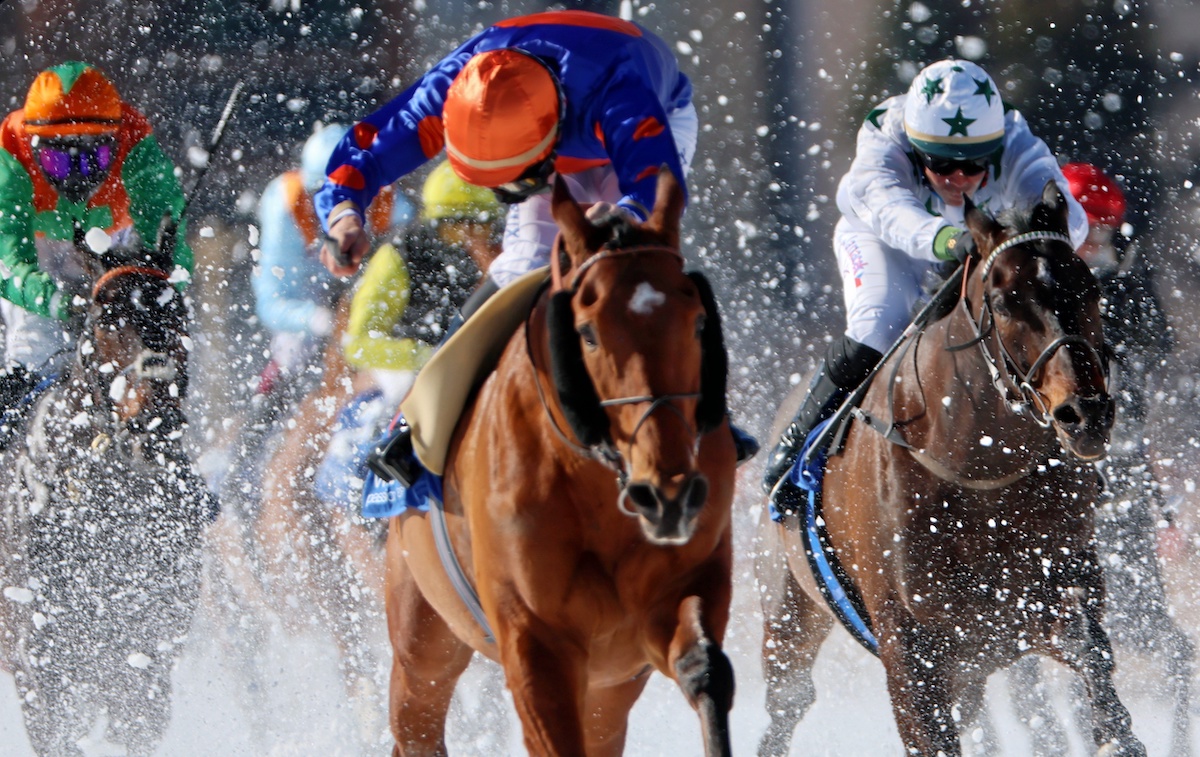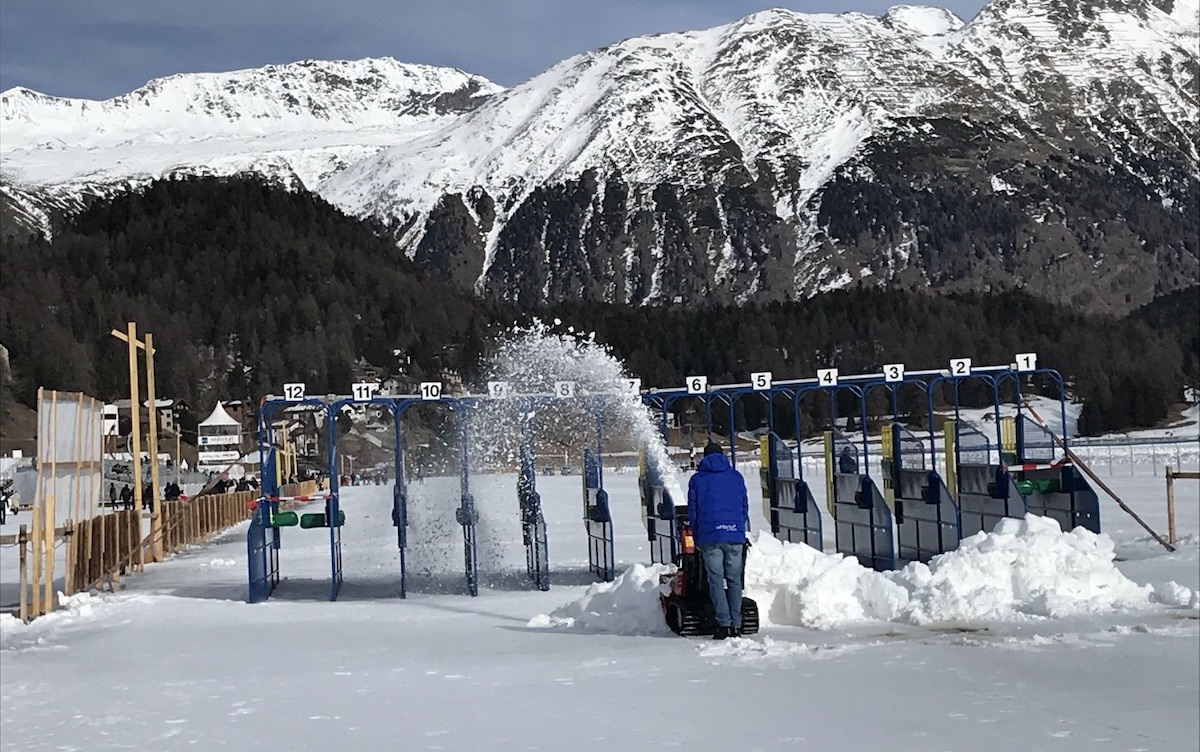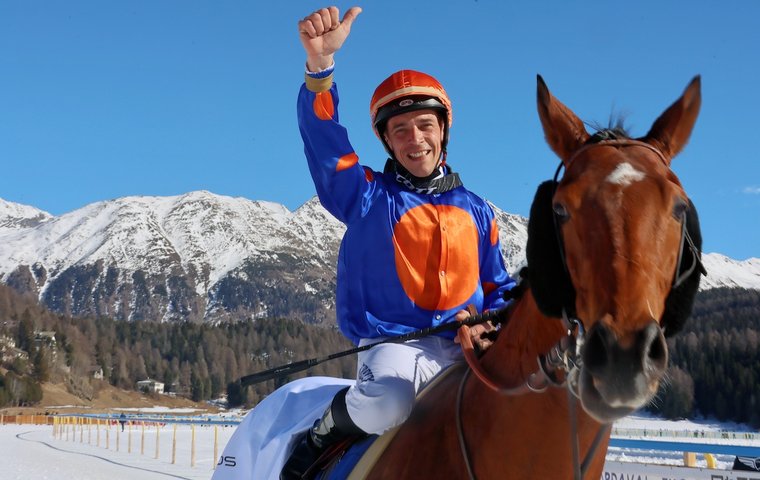
A visit to St Moritz to witness horse racing on a frozen lake is a must for any fan of the sport – but this bucket-list attraction is facing an existential challenge, as Steve Dennis finds out on a trip to this annual ‘magic trick’ of a race meeting.
Switzerland: Thomas Walther smiles, knowing what he’s going to say, relishing the pleasure in conveying the perfect description. “It’s like a magic trick,” he says, and the president of the White Turf is absolutely right.
St Moritz is unique in racing, a magical place that has beguiled its audience into rapture for more than 100 years, where horses race across the frozen lake as though in a fairytale. The three race weekends of the White Turf each February are a joyful celebration of the near-impossible, of the intrepidity and derring-do that has long characterised this neat, elegant, remarkably expensive corner of the Alps that also gave birth to the fearsome Cresta Run.
To watch racehorses gallop across snow-covered ice, those in behind veiled in a Christmas-card blizzard of kickback, entails the suspension of disbelief. It can’t be done – yet it is done, and magnificently too.
On each of the three February Sundays there is a six-race card comprising three Thoroughbred races, two high-stepping trotting races and one skikjoring contest – think water-skiing, but with a horse instead of a speedboat. And like the best magic tricks, it leaves the observer open-mouthed.
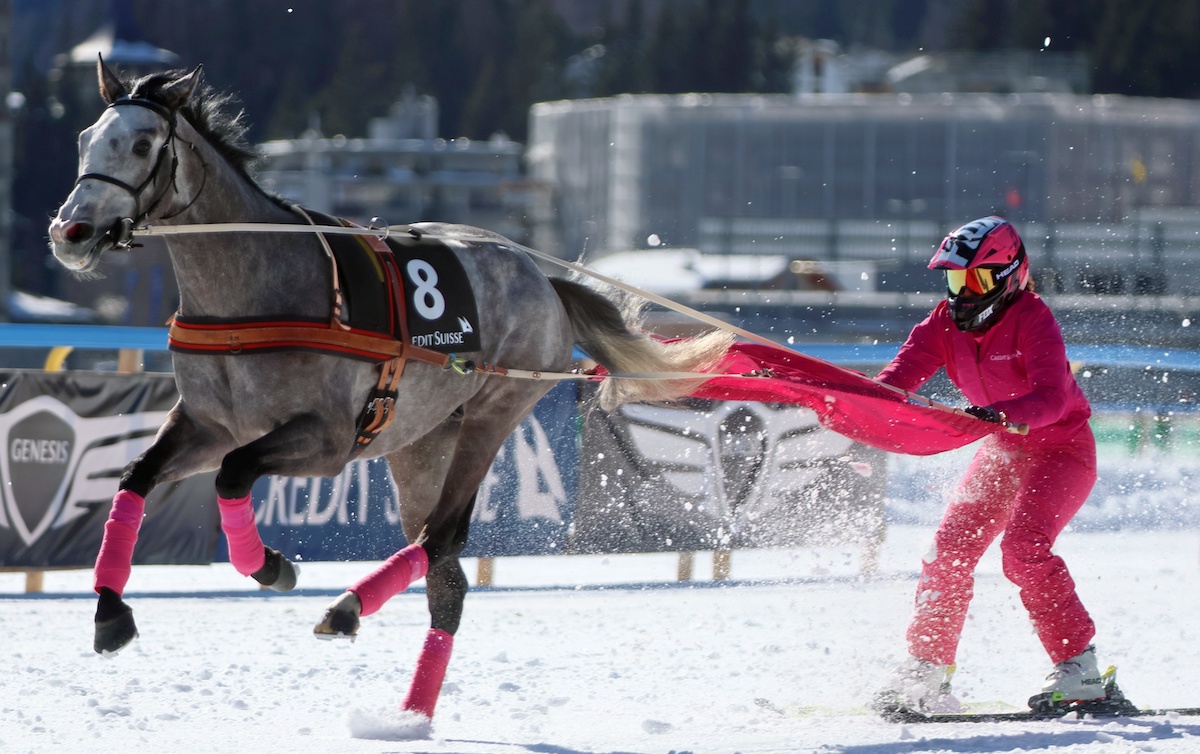
Calamitous events
Ever since the calamitous events of 2017, when water seeped up through a fissure in the ice and undermined the racing surface, resulting in a fatal fall for Boomerang Bob and career-ending injuries for his British jockey George Baker, the words ‘safety’ and ‘climate change’ and ‘unsustainability’ have lent the pageantry at St Moritz a darker hue.
Walther, 54, who owns two high-end hotels in nearby Pontresina and is in his seventh year as president of the White Turf, nods in recognition as the conversation takes its inevitable turn.
“After the accident with George Baker, we began to do a lot of technical things with the racecourse,” he says. “We use a drone now, a drone that has an infra-red camera that can see temperature differences beneath the surface.
“On raceday morning it will fly and show us whether there is any water between the ice and the snow that covers it. If there isn’t, we can be sure that it’s safe to go ahead.”
Walther voices the topical refrain “there’s been very little snow this year”, a sentiment echoed by the world’s leading skiers, who have demanded that their governing body – the International Ski and Snowboard Federation – examine its sustainability strategy in the face of the ongoing climate crisis. Ask in the hotels and bars of St Moritz and the same answers are given: there’s been no snow.
The unflappable, genial Walther notes that the bare minimum required to race on the frozen lake is 27cm of ice and 15cm of snow on top, and the White Turf organisers have been using artificial snow to compensate for the shortfall in the snowfall. That is a secondary issue – after all, as much snow as required can be made – but the condition of the ice itself is of greater urgency.
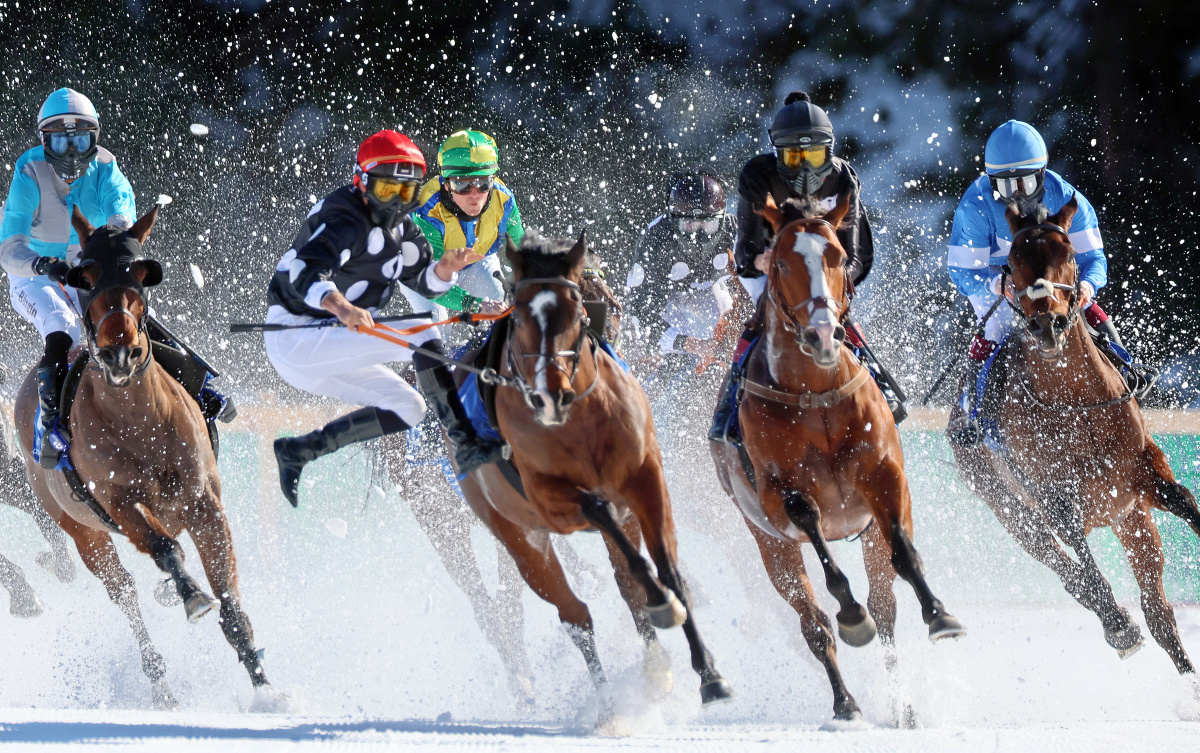 On the third and final Sunday [Feb 19] of the meeting, there was open water, populated by a covert of busy coots, at one end of the lake. Although conditions in the centre of the lake under the racecourse were obviously much more stable – a frogman reportedly had to chip away 85cm of ice in order to slip beneath for a visual check on the footings of the various temporary structures around the circuit – there were still issues on and off the track that severely compromised the White Turf’s flagship day.
On the third and final Sunday [Feb 19] of the meeting, there was open water, populated by a covert of busy coots, at one end of the lake. Although conditions in the centre of the lake under the racecourse were obviously much more stable – a frogman reportedly had to chip away 85cm of ice in order to slip beneath for a visual check on the footings of the various temporary structures around the circuit – there were still issues on and off the track that severely compromised the White Turf’s flagship day.
Don’t pack your thermals
It was a warm day full of sunshine, so balmy that the few British journalists present were muttering ruefully about all the cold-weather kit they’d brought and couldn’t use. The thermals stayed in the suitcases, which tells its own story.
Another strand of that story began in the first Thoroughbred race of the day, when Prix de l’Arc de Triomphe-winning jockey Rene Piechulek was unseated from his mount Identified on the final bend. Piechulek had a hard landing but was uninjured, and won the last race of the meeting on the Swiss-trained Play All Day, but his fall had other consequences.
“It was slippy on the bend – I was not the only one to slip but I was the unlucky one,” says Piechulek. “Then we made the decision to shorten the big race, the jockeys said to run it at 800m or we wouldn’t ride. There were 14 runners and there could have been a very big accident.”
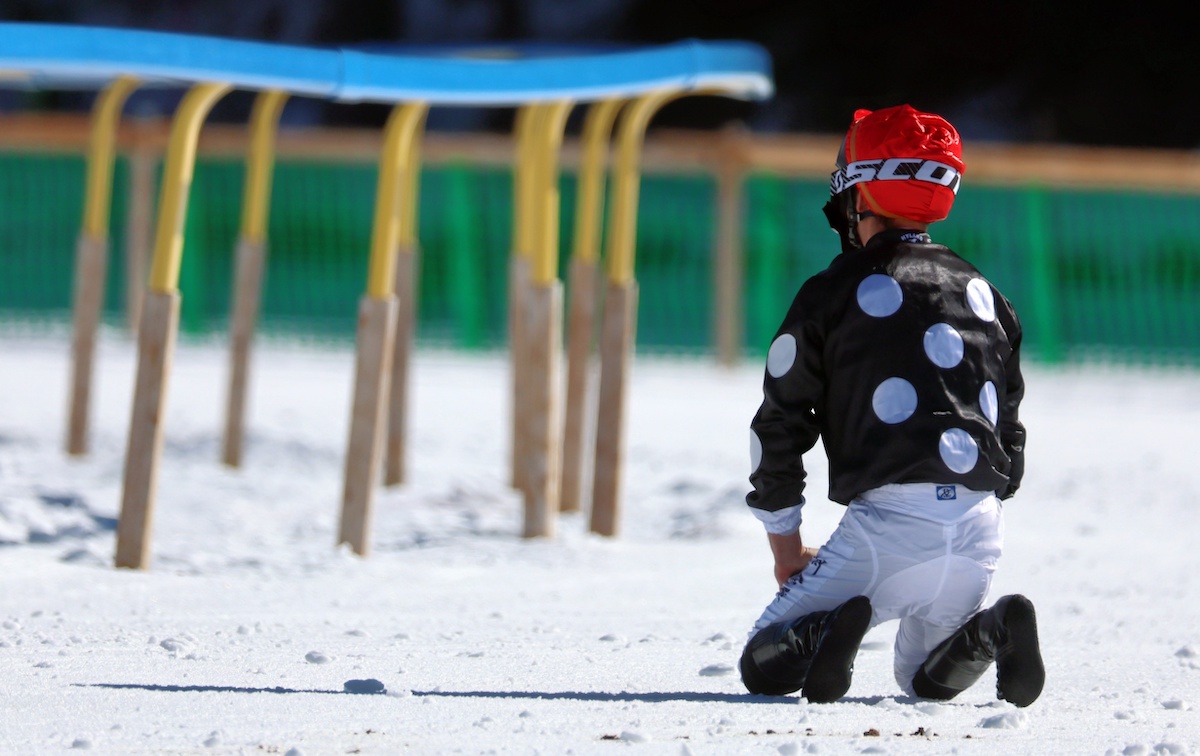
Following the race in which Piechulek was unseated, the secondary tribune (grandstand) was closed to the public as water leached freely through the ice and welled up around its foundations. After the Grosser Preis, the main tribune was closed for the same reason. 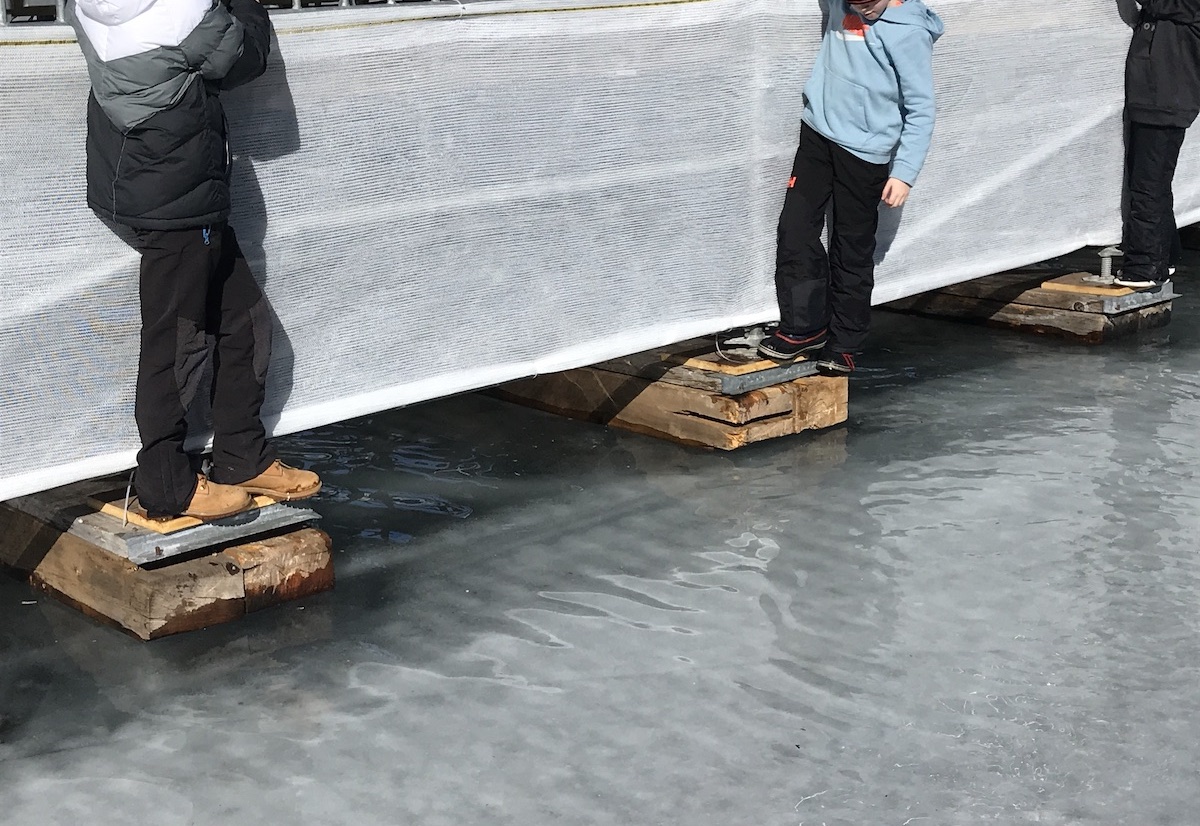
Uneasy defiance
“You must not forget that we are walking on a lake for the third weekend in a row,” says media chief Tina Seiler, a comment that speaks to an uneasy defiance of the forces of nature and climate change beyond simply explaining away the present situation, where the only room for manoeuvre is to shorten races by an absurd degree in order to run them at all.
“The minimum is 800m, and if we can’t race over that distance then there’s no racing at all, safety first,” says Walther. “And we can’t push back the White Turf to earlier in the winter. The snow polo takes place the weekend before we start, and it isn’t possible to move the dates.”
Yet despite the meltwater lapping ominously around their feet the big crowd embraced the occasion with a cork-popping effervescence, their exhilaration at being in such a special place overcoming all other concerns. And despite the obvious issues raised by the events of the day, Walther looks to the future with optimism.
“We are in a great period for the White Turf racing, it’s very popular right now,” he says. “We don’t want to get bigger, because more than this number of people in attendance wouldn’t work in terms of the space we have.
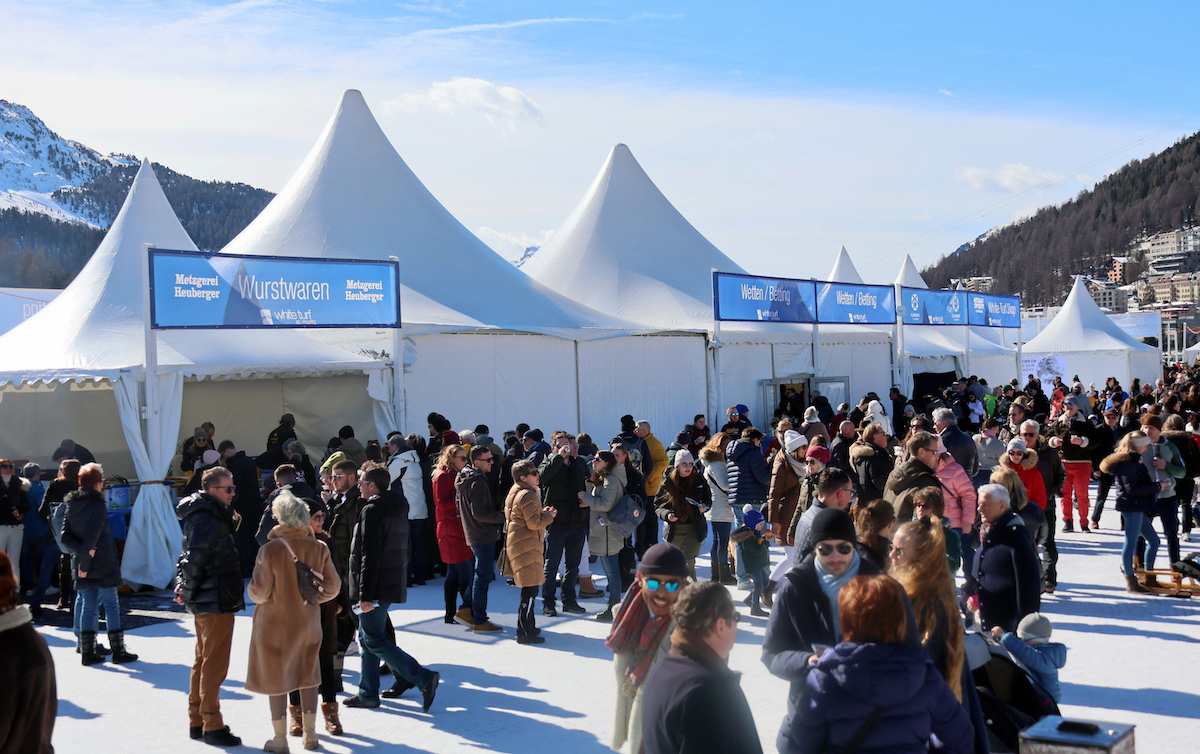 “We want to increase the quality, though, hopefully increase prize-money too. We want to maintain safety and give our customers the exceptional experience they come for.
“We want to increase the quality, though, hopefully increase prize-money too. We want to maintain safety and give our customers the exceptional experience they come for.
“It’s such a special atmosphere. Here we are now on the ice, and in three months the lake will be full of fishing boats, people swimming and windsurfing – a total change. That’s our USP – what we have here, now, is unique.”
Bucket-list fulfilment
That much is undeniable. There is nowhere in the racing world like St Moritz, and even though this year the crowds didn’t get exactly what they expected, they got exactly what they came for.
They came for the unique experience of horses racing over a frozen lake, for the bucket-list fulfilment of being present at one of the sport’s greatest niche occasions, for that annual celebration of the near-impossible.
“It’s amazing, so fabulous, so much fun, so cool to see the horses on the lake,” says Pamela Sak, who splits her time between North Carolina, New York City and St Moritz itself. “But every year I think it’ll be the last year – that’s why I keep coming.”
The message couldn’t be plainer – if you want to go racing in St Moritz, go soon. Because for now, Walther and his team bring the frozen lake to life with a mesmerising sleight of hand, conjuring up a racecourse to a global gasp of amazement and delight.
But one day – perhaps before very much longer – it may take more than magic to save the glamour and glory of the White Turf.
• Visit the White Turf website
Big Jag: ‘That’s a chunk of a horse – he put a lot of smiles on a lot of people’s faces’
View the latest TRC Global Rankings for horses / jockeys / trainers / sires



